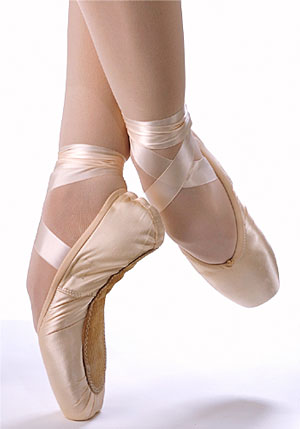Suite 3, Ground Floor, The Gateway,
312 St Kilda Road, Southbank, VIC, 3006
Getting to the Pointe…

What is a pointe assessment?
There aren’t many ballet girls out there who don’t want to be a ballerina en pointe. Being en pointe is not always an easy path and requires, training, technique, strength and quite often, patience.
In order to begin pointe work, a student generally should have been studying classical ballet for about four years doing at least two classes a week. A good strong ballet technique is necessary for achieving what is needed to manage being en pointe.
The growth and development of each individual dancer is considered in a pre-pointe assessment. It is recommended that pointe should not be started until after the bones of the foot have finished growing; this happens around 12 years old in girls (and some 12 year-old girls are more skeletally and physically mature than others). Around this age girls gain more awareness of their body and are able to build on strength and flexibility. Saying this, adolescent growth spurts can cause hiccups along the way (see Blog “Adolescent Growth Spurt – the basics”).
Therefore, some students might be ready for pointe at age 12 if they meet other physical and anatomical considerations, whereas others may be able to start at age 15 with only a year or so of classical technique.
Unfortunately, some girls might have anatomical reasons that mean they are not suitable for pointe work at all. This can be upsetting but remember dancing can still be fulfilling and fun!
The International Association of Dance Medicine and Science (IADMS) recommends that a student should begin pointe work only if she intends to be doing four ballet classes a week and is truly heading for pre-professional training with the potential for a dance career. Other guidelines followed in the Performance Medicine clinic include
• Age
• Strength
• Muscle control
• Flexibility
• Trunk control
• Amount of ballet training already undertaken.
Pointe work should be seen as the end result of gradual improvements in ballet technique. Essential requirements to get up onto pointe are:
• Co-ordination and control of the whole body
• Strong demi-pointe
• Lifting up off the feet
• Keeping the knee straight
• No foot sickle or roll
• Long toes with good intrinsic foot strength.
The pre-pointe assessment will look at objective tests including:
• Turnout mobility and strength
• Ankle and foot mobility and strength
• Trunk control and strength
• Balance
• Pirouettes
Sometimes we might say a dancer is not yet ready for pointe for a variety of reasons including that they may need more core, leg and intrinsic strength and control. In these instances your physiotherapist will prescribe you exercises to improve this strength and recommend that rises in pointe shoes at the barre may commence once that strength is achieved.
Are you a dancer wanting to start pointe? If so, we can get you started ASAP!

